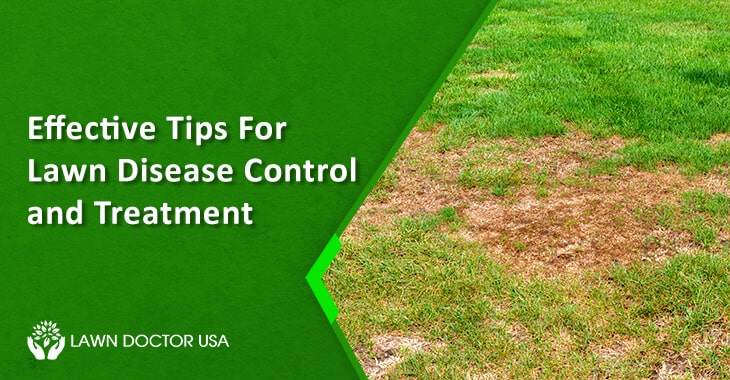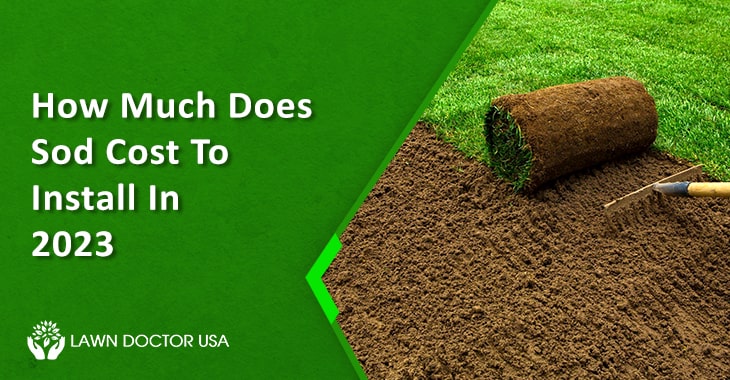
Use These Effective Tips For Lawn Disease Control, Early Diagnose & Treatment
Lawn disease control is an essential practice to maintain a healthy lawn and keep it green. Fungi, bacteria, pests, weeds, insects, and other microorganisms attack your yard to eat its productivity. They quickly take over the yard, destroying fertility and causing lawn diseases.
Unfortunately, once a lawn is infected, it becomes difficult to repair.
If left untreated, they cause significant damage, including discolored grass patches, uneven growth patterns, turf thinning, etc. Lawn disease control is the best way to save your lawn from these life-threatening diseases.
However, disease treatment and control is a long route and involves many steps you may not be aware of. You must hire professionals to take effective lawn disease treatment. Also, you can use these preventive measures to diagnose and prevent lawn diseases.
How Lawn Diseases Infect Your Lawn?
Fungal organisms that live in the soil come out after getting adequate moisture due to poor drainage, maintenance, and environmental conditions. They multiply their growth when the soil is warm and wet. At that time, if the lawn is not properly maintained, fungi attack grass blades and roots and quickly spread the disease to the entire area.
Types Of Lawn Diseases And Their Impacts
Lawns are susceptible to a variety of diseases, including fungal and bacterial infections and other environmental issues. Fungal infections such as brown patches and dollar spots cause grass discoloration and wilting. Bacterial infections like root rot and pink snow mold lead the lawn to root damage and dead grass.
Other environmental issues like drought and salt damage also invite lawn diseases. Apart from them, diseases like powdery mildew, leaf spots, rust, snow mold, red thread, pythium, etc, can also disrupt your lawn.
Identifications Of Common Lawn Diseases
Identifying common lawn diseases is a tricky process. However, there are a few key signs that greatly help you in diagnosis. Follow this process to identify lawn diseases.
- The obvious signs of a lawn disease are discolored and dead grass patches. These patches can vary in size and shape and may have a slightly different color than surrounding healthy grass. In rare cases, you may notice mold or mildew accompanying them.
- If you notice these signs, collect a soil sample and send it to the laboratory to identify the disease type. You should take a professional lawn diagnosis service for the work. Lawn care specialists will analyze the sample and suggest the best treatment plan to restore your lawn health.
Efficacious Tips For Disease Prevention & Lawn Fungus Control
Lawn diseases are a nuisance for homeowners. They destroy lawn productivity, making it susceptible to more diseases, weed growth, pest infestation, and environmental harm. To avoid such grave consequences, you can use these preventative measures for lawn disease control.
- Water your lawn frequently to ensure it gets the right amount of water. Yards need at least one inch of water per week from rainfall or manual irrigation. Avoid absurd irrigation routes because too much or too little water makes your lawn more vulnerable to diseases.
- Aerate your lawn to eliminate thatch layer and soil compaction and regulate nutrient absorption. Lawn aeration enhances drainage capacity and air circulation and prevents fungal diseases from thriving in wet and soggy soil.
- Conduct a soil test to know the pH levels in your soil and adjust accordingly. Take a soil sample and use a test kit to determine its composition and requirements.
- Fertilize your lawn at least thrice a year using the right type of balanced fertilizers. It will fulfill nutrient scarcity and boost growth. Read the instruction manuals carefully before applying fertilizers and follow the written process.
- Mow your lawn at the proper height, and avoid cutting more than one-third of the grass blade length. Rake any dead grass or debris from your lawn to avoid giving space for fungal growth.
- Seed or overseed the lawn according to requirements using safe and toxin-free grass seeds. To support lawn fungus control, remove dead, diseased, decaying, and infested grass and replace it with fresh sod.
- Water the lawn in the morning at a low temperature when the sun is not too hot. Water finds it hard to penetrate grass roots under extreme sunlight exposure.
- Keep an eye on disease symptoms like grass discoloration, spots, yellowing and wilting. Act quickly, if you notice them occurring on your lawn. Reach out to the Lawn Doctor USA team to get lawn diagnosis service for early identification and treatment. Our experts will diagnose the root cause of the disease and customize treatment plans accordingly.
How Can Lawn Doctor USA Help With Lawn Disease Treatment & Control?
Lawn Doctor USA has a comprehensive lawn care program that includes lawn disease treatment and control. We prefer using advanced technologies to diagnose and treat lawn diseases, from root rot to brown patches. Our certified experts apply treatments specific to the disease type. We employ safe treatments and integrated pest management techniques to ensure minimal disruption.
Conclusion
Healthy and disease-free lawn acts as a barrier between the soil and environmental harms. It reduces the effects of UV rays, pollution, seasonal changes, and other odds. So use this routine to support disease and lawn fungus control and keep your lawn disease free for years.




